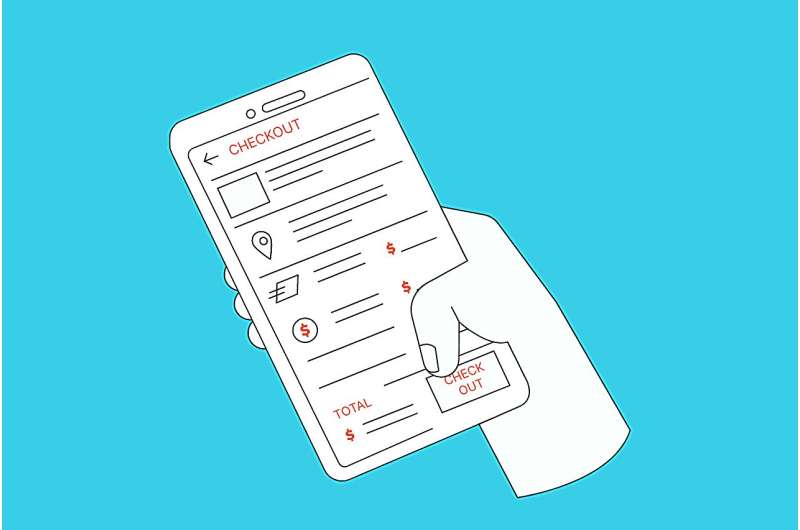This article has been reviewed according to Science X's editorial process and policies. Editors have highlighted the following attributes while ensuring the content's credibility:
fact-checked
trusted source
proofread
More than half of Americans give to charity at checkout, survey shows

Fifty-three percent of Americans give impulsively to charities at the checkout, and certain demographics tend to give more, according to a new survey conducted by faculty at Binghamton University, State University of New York.
From supermarkets to retail, Americans are used to being asked for donations while making in-person or online purchases—whether by rounding up, donating a set amount or purchasing a token. Industry reports reveal how money is being raised—checkout charity campaigns brought in almost $750 million in 2022, with campaigns through Walgreens, PetSmart and eBay being among the nation's largest—but so far no one has developed a profile of who gives or has compared them to traditional donors.
"There are always marketing reports that like to talk about how many people gave and how much it totaled to, but no one was talking about who to target when doing check-out asks for donations," said Lauren Dula, an assistant professor of public administration and policy at Binghamton University.
"The old-school donor profile of a moneyed, educated, older donor doesn't hold in this setting. It really is young and diverse people who are willing to add a little to the pot."
Dula, along with Ruth Hansen from the University of Wisconsin-Whitewater, surveyed nearly 1,400 Americans on impulse giving. Survey respondents self-reported whether they had donated money at a store checkout over the previous year. If they answered "yes," five more questions followed:
- Did you round up your total charge?
- Did you add an additional amount, such as $1 or $5?
- Did you purchase a small token that would be displayed within the store?
- Thinking of the last time you donated this way, how familiar were you with the charity?
- How much money do you think you have donated in this way over the past year?
Over half the respondents (53%) said they had given to charity within the past year while paying for purchases. Those who give said they donate about $50 a year.
"Among those who donate, the most common form of donating is rounding up their total to the nearest dollar," said Dula. "Another popular form was adding an amount, such as $1, to their order. Less common are people who purchase tokens for in-store display."
But who donates? Demographics were found to play a role in whether or not people give at the register.
"Our survey found that women and Black respondents were the top-giving demographics with checkout charity," said Dula. "Middle-class individuals under 50 who have not attended college were also more likely to donate. These patterns contrast with formal donors or those who give directly to charitable organizations, who are usually older, higher-earning college graduates."
The total raised from checkout campaigns has increased yearly since 2012, but the frequency of donation requests at checkout may lead to complacency or annoyance, said Dula.
"The numbers could take a dip when impulse giving isn't so impulsive anymore, and 'no thanks' will become easier to say," she said.
The researchers are working to get funding to re-run their survey in a "post-COVID" situation. This survey was conducted in 2021, when many were still avoiding shopping in person. Dula said that they would like to learn more about how frequently respondents may be asked to donate in a week and their general opinion of these requests.
"We are just delving into the motivations behind the impulse-giving phenomenon," said Dula. "Having a profile of a giver is nice because it helps retailers and charities understand their clientele better. Also, while big-name charities can raise a lot of money due to name recognition, these campaigns can go hyper-local and raise the profile of organizations doing fantastic work in the customer's own community."
The paper, "Who Will Spare a Dime? Impulse Giving Decisions at the Checkout," was published in the Journal of Public and Nonprofit Affairs.
More information: Lauren Dula et al, Who Will Spare a Dime? Impulse Giving Decisions at the Checkout, Journal of Public and Nonprofit Affairs (2024). DOI: 10.20899/jpna.hjym2r29
Provided by Binghamton University





















